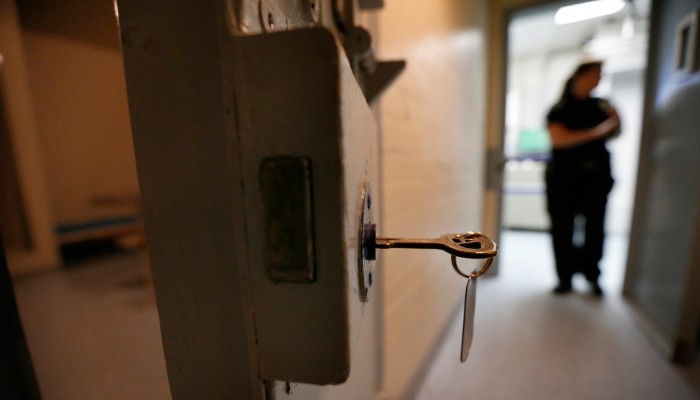New York’s new bail reform law had been in effect for a mere three months when the state legislature amended it in early April. The most significant change is that there are more situations where judges can impose cash bail. They will also have more discretion in setting bail and other conditions of pretrial release. The updates go into effect on July 1.
The purpose of the original bail reform law was to reduce the number of people jailed while awaiting trial simply because they could not afford to pay bail. Court watchers estimated that it would have reduced the jail population by at least 40 percent by eliminating cash bail for as much as 90 percent of arrests. For the remaining cases, judges maintained the option of setting cash bail.
Both before and after the law went into effect on January 1, many criticized its reforms. Despite limited data, some claimed that the law contributed to increases in crime. Prominent district attorneys and other law enforcement and public officials called for immediate revisions to the new law.
The legislature complied, putting changes into the annual state budget bill, which the governor signed a few days later.
The basic framework established by the original bail reform law has not changed. For most misdemeanors and nonviolent felonies, judges are still required to release people with the least restrictive conditions necessary to reasonably assure the person will come back to court. For these crimes, cash bail is still prohibited.
In all other cases, judges have the discretion to release people, with or without pretrial conditions designed to ensure their return to court. These include electronic monitoring, participating in drug treatment programs, and setting bail. In certain felony cases, judges can remand people into custody.
More crimes eligible for cash bail
The original bail reform law allowed cash bail for almost all violent felonies and certain nonviolent felonies, such as sex offenses and witness tampering. The revisions added additional crimes and circumstances to this category. They include second-degree burglary where an individual is charged with entering the living area of a home, certain sex trafficking offenses, and promoting an obscene sexual performance of a child. They also include some crimes involving assault, including vehicular assault, and all charges alleged to have caused the death of a person.
More conditions trigger a cash bail option
Under the revisions, judges will be able to set cash bail based not only on the crime committed but also on a person’s legal history and status, allowing for more cases where bail could be used.
For example, if someone is on probation, under post-release supervision, or eligible to be sentenced as a “persistent offender,” cash bail can be set in connection with any new felony charge, even if it wouldn’t otherwise qualify for cash bail.
In addition, if someone is out on pretrial release for an offense involving a specific victim, cash bail may be set if that person is arrested for a new crime that has likewise has a specific victim. For example, if someone charged with a nonviolent robbery is released pretrial and then commits another nonviolent robbery, a judge would have the option of setting cash bail on the second arrest even though cash bail is generally not permitted for that type of robbery.
Expanded options for pretrial release conditions
Even though the new law permits the use of cash bail in more cases, it certainly is not required. Even for bail-eligible offenses, New York law allows judges to release people under a variety of conditions pending trial designed to ensure the person’s return to court.
The new changes provide judges with more options in fashioning those pretrial release conditions. Previously, judges could order a smaller range of options, such as pretrial supervision and travel restrictions. The update provides judges with wider discretion. Among other things, judges may now require people to surrender their passports, avoid contact with witnesses or victims, or participate in counseling or mental health treatment as part of their pretrial release.
However, in a shortcoming of both the original and revised laws, there is no specific funding to implement services or programs for the increased number of people who will be released before trial under supervision.
There are also still various options for exactly how judges can set bail. For example, instead of cash bail, judges may also order different types of bonds, including a type where friends and family members agree to guarantee a person’s return to court, and a secured type, for which property used as collateral can be forfeited if a person fails to return to court.
Data collection
The revised law requires court administrators to collect and publicly report data regarding people charged with crimes and what happens during the pretrial phase of each case. This data includes demographic and criminal history information, as well as details regarding the charged crimes.
The new legislation also requires court administrators to track how many people are released and under what conditions, how many are committed to pretrial custody and for how long, the rate at which people fail to appear or are rearrested, the length of any period of pretrial incarceration, and case outcomes.
If the data collection and reporting requirement is implemented rigorously, this information could show whether the bail law is working as intended. It also has the potential to reveal whether the pretrial system is treating people fairly across demographic groups. Over time, the data could also identify which conditions of pretrial release are more and less effective at encouraging people to come back to court.
But again, the law failed to allocate specific funding for these new requirements.
Long-term effects of bail reform in New York
Although New York has yet to eliminate cash bail, the changes to the bail law give judges substantial discretion in fashioning pretrial release conditions to encourage people to come back to court. And under the revisions, it’s still the case that nothing in the law requires judges to set cash bail, even if that is now an option in more cases.
Nobody should be held in jail because they cannot afford to pay bail. Prosecutors, defense attorneys, and judges should approach pretrial release creatively to set conditions that will reasonably assure that people return to court in a fair manner without being unduly restrictive.
In a system where everyone is supposed to be presumed innocent, cash bail can be extremely harmful to people who have not been proven guilty. In addition to the trauma of being imprisoned, even a few days in jail can cause people to lose their jobs, housing, or custody of their children.
Therefore, prosecutors should avoid asking for cash bail as much as possible, and judges should rarely set it without a serious inquiry into the defendant’s risk of flight and ability to pay. Time will tell, but based on the experience of other places that have implemented bail reform, it’s likely that society at large will benefit greatly when fewer people are locked up awaiting trial.




